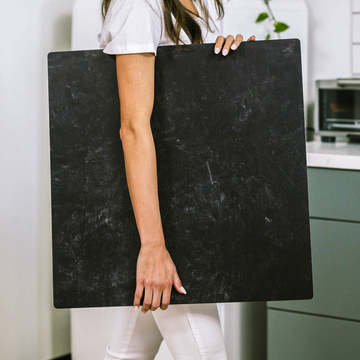Most creators reach for a tabletop background and think, "Does it look cool?" But the truth is, what's happening at the surface level-often invisible to the naked eye-can make or break your entire shoot. If you want your products to leap off the page (or the screen), it's time to get curious about the science hiding beneath your props and pottery.
Forget everything you thought you knew about "matte" vs. "glossy." The world of backgrounds is deeper, richer, and far more fascinating than it first appears. Dive in to discover how surfaces quietly shape your photos from the ground up.
The Micro-Texture Advantage: Tiny Details, Big Impact
Beneath the smooth facade of your favorite backdrop, a secret world unfolds. Micro-texture refers to the barely perceptible bumps, pits, and patterns that scatter light, adding depth to your images. Even a surface that feels flat under your fingertips can have a complex landscape under a microscope.
Why does this matter?
- Micro-texture scatters light in different directions, creating subtle shadows and preserving fine detail.
- Cheaper printed backdrops might look good from afar, but they often lack this dimension and end up making your product images appear flat or artificial.
- High-quality replica surfaces, especially those engineered for photography, mimic real materials like stone or wood at both the visual and tactile level.
Next time you shoot, try placing your subject on both a cheap background and a pro-grade surface. Angle your light from the side and you'll immediately spot how the micro-texture transforms reflections, shadows, and the overall realism of the image.
Light Scattering: Painting with Physics
It’s not just about looks. The way your background interacts with light can completely alter the mood and authenticity of your photo. Here’s the science in plain English:
- Specular reflection (think: a mirror or shiny plastic) bounces light right back, causing distracting glare or hot spots.
- Diffuse reflection (thanks to micro-texture) scatters light, producing soft, natural shadows that flatter every subject.
Great backgrounds are engineered to maximize diffuse reflection. That means fewer headaches over bright spots and more creative freedom as you experiment with light-especially with challenging subjects such as glassware or jewelry. In other words, your background isn’t just a prop; it’s a silent collaborator in your lighting setup.
Material Science: The Backbone of Performance
What your surface is made of matters-sometimes more than color or print. Top-tier photography backgrounds use advanced materials designed for:
- Stain resistance so props, food, or spilled coffee won’t leave a mark.
- Color accuracy that holds up under heavy studio lighting or sunshine.
- Optical quality calibrated to look natural to both the camera and the eye.
When you choose a material that’s built for photography, you’re really investing in consistency. No more weird color shifts or faded edges after a few months in the studio. Think of each background as a tool-one that pays off with every client delivery or product launch.
Angle-Dependent Realism: The Game Changer No One Talks About
Have you noticed how real wood, stone, or fabric changes depending on where you’re standing? This property, known as anisotropy, is often ignored in budget backdrops. If a surface looks identical from every angle, your photos can look a little “off”-almost too perfect to be true.
Premium backgrounds with subtle anisotropy catch the light just like the real thing. This not only heightens realism, but also lets your subject stand out with depth and dimension. If you’re aiming for that irresistible, scroll-stopping image, this detail truly matters.
What Your Camera Sees: The Editing Edge
A pro-quality background feeds your camera more detail-simple as that. Shooting in RAW? Well-made surfaces give you:
- More flexibility to tweak shadows, highlights, and texture during post-processing.
- Greater depth and subtle variation in your images-no need for heavy retouching.
- Cleaner separation between the subject and the backdrop for easy masking or compositing.
Cheap, printed backdrops blur all those tiny differences, limiting your editing options and making your photos feel generic, no matter how advanced your camera or lighting rig.
How to See the Difference for Yourself
- Shoot the same product on two backgrounds: one inexpensive print and one engineered, micro-textured surface.
- Use side lighting and examine shadows, color, and detail-especially at the edges and in the highlights.
- Review your photos in post and notice which background gives you more control and a more believable, professional look.
The lesson? When you’re picking out a background, don’t stop at color or pattern. Ask how the surface will work with your light, your camera, and your editing workflow. The science of surfaces could be the secret ingredient behind your next best-seller.
Have questions about materials, maintenance, or choosing the right surface for your style? Drop a comment below-we’re always happy to nerd out about the details behind stunning product photography.



